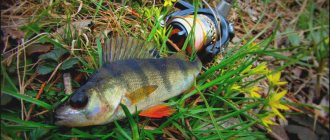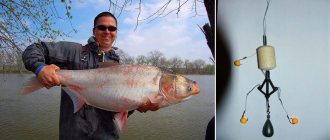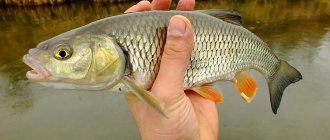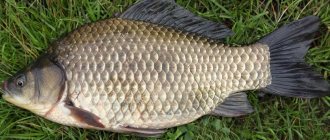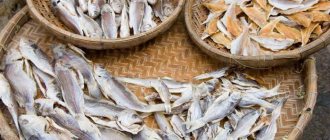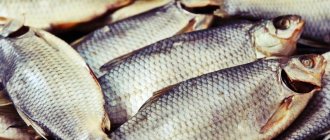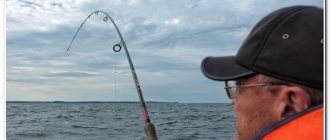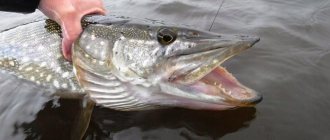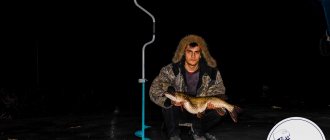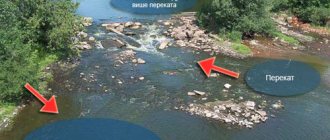What does ide look like?
This species is a relative of the carp, but in appearance it is more similar to a roach. They are related by their bright orange or crimson pelvic fins, but the color of the rather small scales with a golden-silver tint and the massive outline of the body suggest a discrepancy. The ide's head is relatively small, and its mouth is neat. Despite this, in the enthusiasm of the pre-spawning feast, they can even manage to capture pike bait. The color of the scales of this fish is uniform, without the usual dark stripe on the back.
Roaches dress up more simply than adults and do not have bright fins, so insufficiently experienced fishermen often mistake them for chubs or roaches.
Ide can take root both in a brackish bay with mixed water, and in a flowing river or quiet pond, so depending on the habitat, some differences are noticeable between representatives of the same species.
Ide diet
This species is an omnivore. The glutton is ready to grab almost any food with his small slanting mouth, which helps him quickly and effectively gain weight. When a pond/river is abundant with higher vegetation, ides have a passion for “salad,” adding worms, insect larvae, and crustaceans for taste. At the beginning of summer it is even caught by luring it with a bunch of grass.
Having gained 400-500 g on such a diet, the individual also exhibits predatory instincts, picking up small fish and insects caught in the water. Fishermen sometimes even use the method of catching ide with live bait, throwing it into places with strong currents. True, in this way you can catch nearby dace, perch, podust or asp, but you won’t have to suffer due to the lack of prey.
The most respectable fish prefer to feed in shallow water, where they can eat shellfish, fry and even small frogs.
The favorite treat of both young and old is known to all fishermen who have a passion for catching ide - peas. This is practically the only bait that this fish treats favorably, regardless of the time of year and place of residence.
Where to look for ide in the fall?
Depending on the month of autumn, ide can be found in different places. Usually in September, ide continues to be in its summer places. But with the cooling of the water, which begins at the end of September, at the beginning of October, the ide smoothly moves to depth, where it will remain until spring. Therefore, often in the fall the process of catching ide occurs from a boat, since it is often not possible to reach the fishing points from the shore. Among the main places where ide can be found are riverbed edges, holes filled with snags, places where small rivers flow into large ones, in places where springs gush, on reservoirs; already in late autumn the ide approaches the sluices, where a lot of small things accumulate, which it feeds on. In warm daytime hours, the ide can go to shallower depths, where the water is warmed by the sun, where it also goes for the fry, which it feeds on.
What time and weather to catch ide in the fall?
In autumn, it is better to catch ide in the daytime, when the sun has already risen high and warms up the water. Therefore, go fishing around lunchtime and you can fish until sunset. For catching ide, it is better to choose clear, low-wind, relatively warm weather.
What gear should you use to catch ide in the fall?
As we said just above, there are many ways to catch ide, even a lot, today we will present the most popular methods. And most often, ide is caught on float rods equipped with both a simple hook and a jig; you can also catch ide in the fall on a feeder; and another way to catch ide in the fall is to catch ide with a spinning rod. You can also catch ide with live bait, you can even attach live bait to a float rod, and you can also use a regular bait to catch ide with live bait.
In autumn, ide is less and less interested in plant baits, so it is better not to experiment, but to go fishing with a worm, bloodworm or maggot. When catching ide on a feeder in the fall, you must add chopped bloodworms or a worm to the bait mixture.
When catching ide with live bait, you should choose smaller fish as live bait; minnows or minnows work well.
Spinning fishing for ide is widely popular, and the main baits for catching it on a spinning rod in the fall are: small oscillating spoons, sinking wobblers and jig baits; these can be either silicone or foam baits.
The retrieving technique when catching ide with a spinning rod should be done using a step, so as to catch every hole on the bottom. When fishing with silicone or foam rubber, try to choose jig heads of the smallest weight, so that the bait falls smoothly and slowly to the bottom.
Particular attention should be paid to the fact that in the fall the water becomes more transparent and the ide is seen more than in the summer, so it is worth using equipment that is less noticeable, but the strength should remain at a high level, also when fishing with a float rod, use a longer rod so that the ide didn't notice. You also need to be quiet while fishing and not create unnecessary noise.
We'll end here.
Catching ide in spring
Yazis are extremely active from the beginning of the ice drift. As soon as the winter ice melts from the reservoir and the air is saturated with oxygen, this fish begins its pre-spawning glutton. Having settled down with a float rod near the mouth of the tributaries of the main river/lake and using ordinary worms as bait for catching ide, a successful angler can pull out the prey almost one by one.
During the spawning period, which begins quite early (at the same time as perch and pike), the fish are traditionally busy with their own business and do not want to bite. Males add a scattering of small yellowish warts to their everyday outfit and gather together with females in small rivers and streams near underwater plants. The spawning process lasts for 1-2 weeks: first, the oldest individuals give birth to offspring, and at the end, 3-5 year olds take part in the first marriage ceremony in their lives.
Spawning takes place at a temperature of about 13? C, and as soon as the water warms up to 15? C, adults begin to stubbornly restore their strength. So by the end of spring, fishermen who are able to put an insect on the water without the knowledge of the fish hiding in the grass are observing a pleasantly active bite.
At this time, catching ide from the shore is successful. In the spring (late May) you need to look for it at shallow depths in places with a rocky or sandy bottom and convenient snags behind which the fish can hide. Among their favorite spring dishes are insects, and beetles are rarely their taste, but grasshoppers attract a lot of attention. In addition, luck comes to fishermen who offer treats of worms and crayfish, and by the end of May - cherry-sized bread balls and bait in the form of an ant or caddis larva.
If a reservoir can provide fish with deep holes and snags, a pile bridge or at least a hydraulic structure, it can stay there for the summer. But in streams and small rivers, fishing for ide can only please you with roaches.
Ide habitats
Ide belongs to the carp family. But in terms of its taste preferences, it is a more versatile fish. Since he can eat both plant and animal food. In its search, the ide moves much more actively throughout the reservoir. This makes catching it interesting, regardless of the fact that it is almost always inferior to carp in weight and size.
It can be found on rifts, in deep holes, in places near bridges and dams where there are whirlpools. The ide can go out in search of food in shallow water. Especially in places where streams and rivers flow into the main channel.
In the autumn months, the ide goes to greater depths. To those places where there are artificial and natural shelters at the bottom. But in warm and windless weather it comes out to feed in shallow water. Where whitebait, small frogs and other food are found in abundance.
Ide does not like open places and where there is at least some shelter in the form of bushes or shade from trees growing on the shore. Or fallen leaves on the water - that’s where ide will most likely appear.
Fishing for ide in summer
In the last days of May, ides move to deep, cool places, most of which they will occupy almost until the end of autumn. As a rule, these are dumps, pre-channel tables, pits with reverse flow, and small whirlpools.
At this time, it switches to night mode and is encountered by fishermen only in the early morning or late evening, while the sun is not even visible on the horizon. Roaches, however, are less cautious and in a quiet place can swim to the surface in a flock even during the day. In cloudy weather and during the period of insect flight, an older individual may appear at shallow depths.
It is in hot weather that representatives of the species demonstrate their caution and capriciousness, so catching ide in the summer is more often successful for fishermen relying on bream, ruffe or roach. If you are specifically interested in ide, you will have to make additional efforts - use a camouflage suit, hide in the bushes, or lie down on the ground. In addition, it is necessary to calculate the appropriate bait and choose the right way to play.
In the summer, natural baits are used as bait for catching ide: bread bugs, night moths, gadflies, blue dragonflies, as well as other insects living near the given reservoir. Among artificial ones, the most effective are imitations of mayflies and caddis flies (in the second half of summer).
In large, deep rivers, ides can travel and do not stay in the place chosen by the fisherman. To attract trophy fish, bait is required. They are lured with steamed cereals with the addition of hemp cake or kvass grounds. Fish also like bait made from steamed rye crackers.
When choosing before fishing what to catch ide with, it is worth considering: if there is a silver carp in the river that also likes peas, it can interfere in the evening and at night. Only early birds can catch ides on pea porridge.
Technique for catching ide with a spinning rod
When fishing from the shore, it is better to examine the ide’s favorite hunting spots. When fishing in an unfamiliar body of water, you should look for holes and pools. Pay attention to the color of the water. In deep places the color will be darker. You can trawle the bottom with a fishing line and a sinker.
If you get into a hole, it will become a little harder to turn the reel and the line will weaken. This is how we determine the bottom topography. Having found out the places, we begin fishing. Different wiring should be used when changing types of spinners.
Catching ide in the summer from a boat is the main way of good fishing. At this time, the predator actively hunts small mounted fish. “Cauldrons” are formed. A flock of predators beats fish, huddled in one place.
Advice! When fishing for boilers, casting should be done along the edge of the school. In this way the fish are not scared away. With such a cast, the outermost individuals may be frightened, but the rest will be attracted by the play of the bait.
Catching ide in autumn
With the onset of cold weather, the fish stops being lazy during the day and goes out hunting, choosing places close to the main currents, most often under hanging branches of willows and coastal bushes. Her biggest appetite flares up at 10-11 am, as well as 14-17 pm. At such moments, it is possible to catch ide in the fall using dragonflies, flies, crickets, grasshoppers, caterpillars and adult butterflies, as well as their skillful imitations.
By the end of September, he ceases to be interested in surface animals and opens the hunting season for young carp fish at the bottom. Therefore, fishermen begin in November to catch ide on a spinning rod with a spinner No. 00-1. Moreover, not only roaches, but also large adults fall for this small bait.
Lures, wobblers and spinners for ide
To catch ide with a spinning rod, wobblers and spinners can work and be catchy in different colors; it is necessary to take into account the size of the bait, since the mouth of the fish is not as large as that of pike or pike perch, then the bait should not be large, 2-4 in length cm.
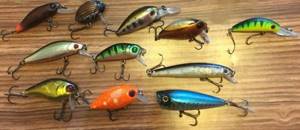
And also, taking into account the ulcerous parking areas, it is better to select the depth of the wobblers in such a way that when retrieving they go near the bottom. Lures for ide are mostly dark in color; bright acid colors hardly work when fishing, this is probably due to its food supply, what it likes to eat. In order to better choose a bait, spoon or wobbler for ide, you need to study the lifestyle of these fish and their habitats, what time of year, and what they like to eat.
Spoons also work well when catching ide on a spinning rod; oscillating and rotating spoons are suitable. Spoons, spinners for ide and roach are usually also not large in size, 2-5 cm in length, preferably dark or spotted colors, similar to gudgeon. And the pinwheels are small in size, 1-2 numbers, with petals of various shapes and colors. It is difficult to please these fish, but given the variety of food that they are used to eating, it is possible to choose a spoon.
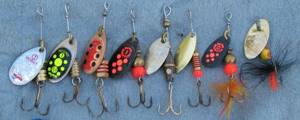
Any fisherman knows that when fishing you definitely need to try different baits; sometimes some unsightly and cheap spinner or wobbler will be preferable to an expensive bait from a well-known manufacturer.
This is a cautious and timid fish, so to cast bait it is better to approach from below the river and throw a spoon or wobbler upstream or across the river. Although when fishing for ide with a spinning rod, if you fish holes and pools, then casting bait downstream also works, for the reason that, unlike the chub, it stays closer to the bottom.
Catching ide in winter
According to L.P. Sabanev, ide is one of the most resilient fish, capable of surviving even sharp temperature fluctuations without harm. Therefore, in winter, when there is enough oxygen in the water, these fish continue to live an active life. Only in the most severe frost, or when the access of oxygen to the water is extremely limited, do flocks briefly fall asleep.
Fans of fishing prefer to organize winter fishing for ide on the last ice. At this time, his attention is attracted by small dark jigs and bloodworms, and plant-based mixtures should be used as bait. Among the live baits, maggots, bark beetles, worms, and burdock moth larvae also rule. Sandwiches made from these delicacies in combination with dough or porridge are especially tasty.
The most catchy places for catching ide in winter are located near snags. If there are none in the reservoir, fishermen often flood them with a load themselves so that fish can settle in the proposed apartment. In cold weather, the ide is characterized by sharp strikes, but it takes a long time to look at the bait, so slow retrieves are most effective.
Considering the snags, the need to use thin lines (main 0.3-0.4 mm) and the strength of the ide, you should be careful when fishing it.
Tackle for catching ide
Catching ide with a float rod
This method is effective in turbid water, for example during periods of ice drift or flood. You need to use a thin fishing line (0.14 -0.25 mm for roaches, 0.3 mm for adults) and a light, sensitive fishing rod with a hook number 4 or 5.
To catch ide with a fishing rod, it is best to get a rod 5-7 m long in order to be able to cast the bait over considerable distances without arousing suspicion among cautious fish.
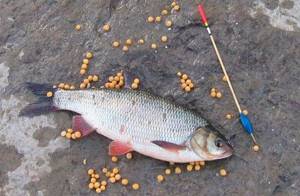
Depending on the time of year, the bait is placed in the water column (0.8 - 1 m depth), or directly at the bottom. Floats should be spherical or ovoid, with a noticeable antenna, weighing 2-3 g. Then they will behave well in the current and record bites “for the flood.”
Catching ide with a spinning rod
Spinning fishermen usually use a set of gear used for fishing for perch or chub. As a rule, take a rod with a test weight of up to 25 kg, preferably even up to 10 kg and a length of 2.6 - 3 m.
The fishing line must be sensitive, so fishermen prefer not monofilament, but braided (0.12-0.16 m) with an inertial reel of 2500-3000. An extended spool is often appropriate. It is best to take a metal leash with protective fittings against attacks by pike.
Rotating baits perform best, while wobblers rarely seem to be worthy prey for ides, except perhaps the smallest ones of 4-6 cm. The selected spinners should work well when catching ides in a retrieve in a leisurely manner. If fishing is carried out in thickets and snags, the restraining resource of the gear becomes important.
Hooks for catching ide should be as sharp as possible, wear-resistant and strong. Chinese models successfully straighten even small specimens.
His bite is very light and careful, so if you hook too early, the fish caught on the tip of the lip will easily fall off the hook.
Where to look for ide and when to catch it
In the spring, the most successful can be catching ide on the current, the streams of which are broken by flooded bushes, trees that have fallen into the water and other obstacles that create eddy currents downstream, where the water boils and swirls into whirlpools. These are very promising places for catching ide with a spinning rod. Most often, even a small hole, starting immediately after the roll, brings results. Everything that can serve as food for ide is thrown here along with streams of water, including weak or sick fish that cannot cope with the current. In summer, in such places, ides feed on various flying insects that have fallen into the water.
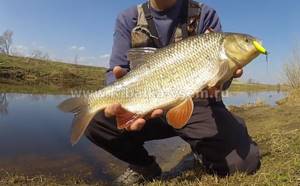
But not only the holes behind the rifts are successful places for catching ide. Promising places also include bridges, and ide can be actively taken not only downstream, where the streams of the river are broken by the bridge piles, but also at the entrance to the riffle, that is, above the bridge. Here, tackle for catching ides, of course, can be damaged by getting caught on piles, but catching large ides justifies such a risk.
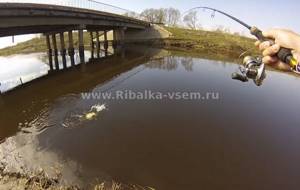
But why can fishing lines and baits break? Hooks on the piles occur because it is at the drop of the bait downstream, just under the bridge, that the large ide standing at the bridge supports occurs. Bites are especially frequent in the bright morning and afternoon, when the bridge provides beneficial shade for fish.
In the spring before spawning, ide is especially greedy; you just need to remember about the timing of the spring ban. However, in most regions the spawning ban begins in mid-April and the course of the ide by this time most often ends.

Fishing for ide with a spinning rod in the summer is mostly done in places covered by bushes hanging down to the water, along the border of the coastal strip of vegetation and near bridges, which are the permanent habitats of ide. It is also attracted to deep holes with a hard, non-silty bottom, which are located immediately behind the rifts. The swirls behind fallen trees, especially living ones with green foliage, are especially attractive to this cautious fish. There are a lot of insects and small fish here, which serve as excellent prey for large ide.
